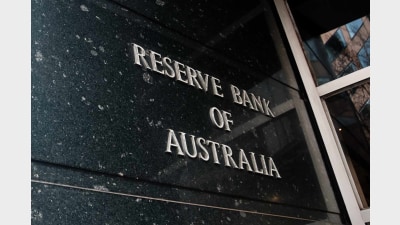Stable income and the impact of the Age Pension


“I just want a nice stable income in retirement to cover my living expenses and a few luxuries”. Seems like a simple request, but is it? One of the current debates in the superannuation industry is whether or not funds should allow for the Age Pension when they estimate a member’s future “income” in retirement.
The argument for including the Age Pension is that it will form an important source of income for most retirees for many years to come. Including the Age Pension in retirement income estimates would be very helpful for members.
However, the eligibility rules for the Age Pension, especially the income and assets tests, are highly complex. Most funds don’t have enough information about their members to calculate Age Pension entitlements. The argument against including the Age Pension in “income” estimates is that funds simply can’t do it with any real accuracy, and they risk misleading members if they try.
A simple example
Consider a couple who retire with $1 million in superannuation between the two of them. They own their own home but no other significant assets or investments. They want to use an account based pension and they want as much income as possible to enjoy their retirement for another 30 to 35 years. We have assumed a pretty healthy earning rate of six per cent p.a. in the examples that follow, which suggests a “growth” investment profile that includes a significant exposure to volatile assets like shares and property.
They ask their fund for a projection of retirement income based on the minimum superannuation pension payments specified by the Australian Taxation Office (ATO). The superannuation fund gives them a forecast that looks something like chart one.
Chart 1: Retirement Projection for Super only using ATO minimum payments
It looks like their income will be pretty close to $50,000 a year, and the account will still have $200,000 left at age 100. The income looks a bit “jagged” because the ATO tax scale has a few large steps rather than lots of small steps, but it doesn’t vary that greatly from $50,000 a year.
Our couple notices that their forecast income drops in later years and it looks like their account balance will still have money left over. So, they ask for the “jagged” ATO changes to be smoothed out and a minimum of $50,000 a year to be included in the projection, shown in chart two.
Chart 2: Retirement Projection, Super only with smoothed ATO rates and $50,000 minimum
It looks just right – except that is doesn’t include the Age Pension.
Including the Age Pension
Take exactly the same projection and add in the Age Pension and the result looks like chart three.
Chart 3: Retirement Projection, including the Age Pension
Now it looks like their income will rise dramatically in old age as their superannuation balance drops. Their total retirement income no longer meets the stable profile they intended.
Actually, building a stable income forecast where income includes both superannuation and the Age Pension is very difficult even if you know the circumstances of the individual. With much experimenting, and after talking to their adviser, our couple concludes that an eight per cent annual drawdown (which is higher than the ATO minimum up to age 85) with a minimum drawdown of $40,000 a year will deliver stable total income and will use up all their super over 35 years, as shown in chart four.
Chart 4: Retirement Projection, Stable combined income
But the rules of the Age Pension are such that this particular plan would be irrelevant if this wasn’t a couple, or the couple didn’t own their own home, or their combined superannuation balance was significantly larger or smaller, or the assumed average rate of investment return was altered. And even for this plan, for this particular couple, there remain some big unknowns including;
- The level of investment returns and the impact of any (inevitable) market downturns.
- How long need the balance needs to last?
- Whether the Age Pension rules are going to change.
So, for now, where does that leave our couple? There are two simple conclusions.
- High quality, personalised, ongoing financial advice in retirement advice is essential; and
- The best financial plans incorporate the Age Pension and are sensitive to the circumstances under which a retiree will be eligible for social security payments.
There are more elements that need to then be considered, however. Firstly, what happens if we allow for volatility in the year by year returns, but keep the same total long-term return? Secondly, what if our forecast long-term return proves to be wrong?
Adding some volatility
To answer the first question, chart five shows four different scenarios, each with volatile year by year results but an average over the whole period of around six per cent p.a. The chart shows the total return adjusted for inflation and all four scenarios end with roughly the same total performance of 250 per cent.
Chart 5: Four Volatile Return Scenarios
Scenario one has the strongest first half but weakens towards the end. Scenario three suffers some poor early years, but then catches up in later years and so on.
Using these volatile return forecasts, chart six shows the extra income from super or the Age Pension. If income from super is less than the original plan in chart one (due to poor returns), the blue bar is below the line. Similarly, for the Age Pension; higher pension payments appear as red bars above the line and lower pension payments appear as red bars below the line.
Chart 6: Variations in Retirement Income due to Volatile Investment Returns
The first thing to note is that the superannuation balance actually runs out before 35 years for a number of these scenarios. That is the explanation for the large blue bars below the line at the end. This highlights how important the timing of investment returns is. While the average return may be six per cent, poor returns early in retirement are more damaging than poor returns late in retirement.
However, the key observation from these charts is not the superannuation account running out in the last few years. It is that income changes for our couple tend to be offsetting.
In periods where income from superannuation is less than expected, income from the Age Pension tends to be higher. Conversely, when income from superannuation is more than expected, income from the Age Pension tends to be lower.
Why does that happen? Both the assets test and the income test for the Age Pension are heavily influenced by our couple’s superannuation balance. Poor short-term investment returns that reduce their superannuation balance will also increase their Age Pension entitlement. The trade-off is certainly not even – higher Age Pension payments won’t fully compensate for lower superannuation income, but they certainly help.
What if we’re wrong?
But what about our second question, where the forecast long term return proves to be wrong?
It appears an Age Pension offset applies here as well; lower superannuation income is offset by higher Age Pension payments. The easiest way to show this is to calculate the value of all income received over retirement. We can calculate the total value of all superannuation income payments, all Age Pension payments and the remaining superannuation balance (as a bequest) assuming the original six per cent p.a. forecast average earning rate, and then assuming a higher and lower average earning rate. The results for a retirement of both 25 years and 35 years are shown in chart seven.
Chart 7: Variations in Total Retirement Income due to Different Average Investment Returns
As the average long term earning rate on superannuation increases, the total value of retirement payments improves, but not by as much as you would expect. This is because improvements in the value of superannuation income (and the bequest) are at least partially offset by reductions in the value of the Age Pension received.
In finance, this is sometimes called a “hedge”. In technical terms, the Age Pension acts as a partial hedge for market risk in the superannuation portfolio. As we noted in the previous article, the rules of the Age Pension are such that the results would be different if this wasn’t a couple, or the couple didn’t own their own home, or their combined superannuation balance was significantly larger or smaller. In particular, the “hedge” is not relevant for retirees who are entitled to a full Age Pension, or for retirees who will likely never be entitled to an Age Pension.
What does that mean for retirees? It is important that advisers work closely with retirees to identify their tolerance for “risk”. However, “risk” should extend beyond just superannuation returns. “Risk” should consider total retirement income including Age Pension entitlements, especially for retirees who are, or could become, entitled to a part pension.
Please note: All charts are sourced from the SSGA Social Security Entitlements Model and ATO data, as at 30 April, 2019.
Jonathan Shead is head of retirement solutions, Australia at State Street Global Advisors.
Recommended for you
High risk, high return assets will become dangerous options for superannuation funds under the Federal Government’s planned $3 million superannuation changes, writes Brad Twentyman.
Economic policy can no longer ignore the macroeconomic impacts of Australia's superannuation system and the emerging policy implications, writes Tim Toohey.
In an age where climate concerns and social consciousness dominate headlines, it’s no surprise that investors are increasingly seeking investments that align with their values, writes Simon O’Connor.
How profit-for-member superannuation funds can embed 'commerciality with a heart' and marry a member-first culture with commercial outcomes.














Add new comment